Probes: Ancient Spaceships
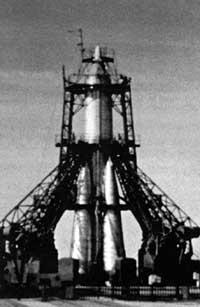
The Lunik probes of the Soviet Union were the first spacecraft that man installed on the Moon. They were the first spacecraft to escape the gravitational force of the Earth, arrived at the Moon, brought samples of it and placed a vehicle on the Moon.
They were circular probes of about 361 kilos. Some of the devices they carried were outside the sphere and had five communications antennas. They also carried the magnetometer, the Geiger counter and tools to detect small meteorites. When they reached 113,000 kilometers of the Earth, they released the sodium orange so that astronomers could faithfully follow the probe path and study the gas in space.
The first US spacecraft were the Pioneer probes. His mission, within the Able program, was to flee the gravity of the Earth and reach the Moon to put it in orbit and photograph it. The first three Pioneer probes failed. The most successful was the second, the Pioneer 1 probe. It failed to reach the Moon, but remained in parabolic orbit until its atmospheric destruction. He only managed to fly forty-three hours, but during this brief time he was able to see that the radiation surrounding the Earth is structured into bands. It also took time to measure the interplanetary magnetic field. The probes were small, they did not reach 38 kilos.
Following the same path as the three previous probes, in late 1958 the United States, using the Juno 2 rocket, sent the Pioneer 3 and Pioneer 4 probes into space. Despite the same name as the previous ones, these two probes did not look much like them. They were very small, they did not reach six kilos. They had a cone shape and a single objective: Reach the moon and measure radiation. The second, the Pioneer 4 probe, was the first American spacecraft to escape the force of Earth's gravity. He got close to the Moon, but not so much.
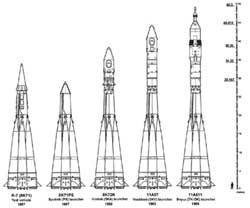
Another year, with three other spaced probes, the United States launched a new generation of Pioneer. The defeat was total, as they were not even able to reach the orbit of the Earth.
Meanwhile, the Soviets continued to work. In 1958 the probes that tried to reach the Moon were redesigned and triumphed. The Luni probe was sent to the Moon in January 1959. Circular probe of 361 kilos. He did not have a propulsion system, so his goal could be to hit the Moon because he carried many symbols of the Soviet Union. By a mistake it did not reach the Moon. However, the Moon has no magnetic field and showed that the solar wind crosses the solar system. Soon after they sent the Moon 59A probe to the Moon, but it could not go beyond the Earth's orbit. Total success came with the Lunik 2 probe.
He left the Baiconur on 12 September 1959 and reached the Moon on 14, in the area of Palus Putredinus. It was a journey of thirty-three hours. After the Luni 2 probe came the Lunik 3, the first to carry an image system. The system consisted of a two-lens camera, a film processing system and a scanner. With a lens of two hundred mm it adopts the general images of the Moon, while with the lens of the Five Rye, those of certain areas of the Moon. As the photos were taken, the images were revealed in the processing system and the scanner turned them into electrical signals before sending them to Earth. Thanks to it the first images of the hidden face of the Moon were obtained. The probe had a cylindrical shape and a weight of 278 kilos. Outside it had solar panels to ensure the operation of the probe. In April 1960 it enters the Earth's atmosphere and is destroyed.
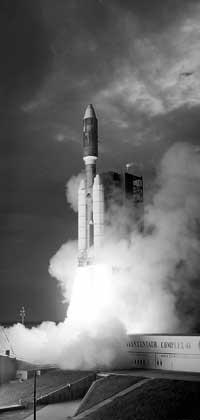
Later, to take more photos to the hidden face of the Moon, Lunik tried to send two other probes of the series, but they failed. The Marsnk 1 and Marsnk 2 probes were the first attempt to reach Mars, but they also failed to leave the Earth. They were cylindrical spacecraft of 640 kilos, with solar panels and antennas.
Between 1961 and 1962, the Soviets tried to send Sputnik 7, Sputnik 19, Sputnik 20 and Sputnik 21 probes to Venus. For various reasons, the four trials were corrupt. Compared to the previous probes, these were much larger, about 6,500 kilos. They also thought that one of them was human leadership, but in the end it was not.
The Venera 1 probe first got closer to Venus. Cylindrical appearance, with two meters of height and two meters of communications antenna. It contained magnetometer, ion detector, micrometeorite detector and radiation counter. With a week of travel of 2,000,000 kilometers the contact with the boat was lost. Three months later, it passed 100,000 kilometers from Venus to become the satellite of the Sun.
Phobos 1 and Phobos 2 probes were exactly the same. The goal was to land on the moon of Phobos of Mars. Each probe contained, in addition to its tools, two containers that would go down to Fobos to take pictures, data and samples. Both probes were launched with the Proton-K rocket.
The Phobos 1 probe was spaced on San Fermin Day in 1988 and was fine until early September. However, during a communication session the connection was interrupted and never recovered. It seems that due to a bad order the hoppers that had to maintain the orientation of the probe were paralyzed. Thus, solar panels could not face the Sun and were left without electricity.
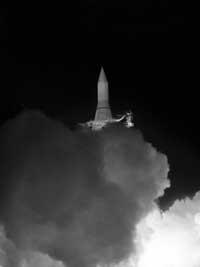
The Phobos 2 probe worked well until it reached Mars. When he was about to reach Fobos, 50 meters away, and had to release the landing devices, the connection was lost. The cause of the error was a failure on the probe computer. He turned 52 to Mars and sent 37 photos, but it cannot be said to be a success because he could not land Phobos on the moon.
The Ranger project was America's first attempt to send probes to the Moon and send high-resolution images. Nine probes were used in the project, the first six failed, but the Ranger 7, Ranger 8 and Ranger 9 probes were completely successful. Between three probes 17,200 images were sent. These images, in addition to helping the Surveyor and Apollo spacecraft decide where to land, allowed to see the details of the Moon's soil.
Ranger probes were between 305 and 367 kilos. They were cone-shaped and between three and four meters high. To be able to guide the probe they had nitrogen thrusters, while the electric energy was obtained with the help of two solar panels of meter and a half length.
Communications were carried out with an omnidirectional antenna and a parabolic antenna. They had a six-camera television system, all the same, but working at the level. Before they hit the moon, they took pictures as they approached. The last image was taken three tenths of a second before the impact.
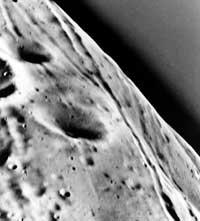
The aim of the Mariner 1 and Mariner 2 probes was to approach Venus to accumulate information about the magnetic field, charged particles and mass of the planet. The first was destroyed immediately after the launch, while the second was a success. Mariner 2 took off in August 1962. Everything went well until September 8 lost the ability to drive the probes. Fortunately, in a few minutes the problem was solved. Another surprise on October 31 is that one of the solar panels suddenly went out. A week later it was reinstated and all the tooling could be recovered. On 14 December he began to send the first images of the hidden face of Venus, 34,000 kilometers from the planet. This probe produced, among others, two discoveries: He unveiled the high temperatures in Venus and the carbon dioxide in its atmosphere.
From there, the fate of the Mariner probes was Mars. The Mariner 4 probe was launched into space on November 28, 1964 and reached the orbit of Mars on July 14, 1965, 9,920 kilometers from the surface of Mars. In addition to showing a planet full of craters, it confirmed the existence of an atmosphere mostly of carbon dioxide and detected a small magnetic field on the red planet. The Mariner 6 and Mariner 7 probes were sent to the Martian equator and south pole in February and March 1969. Both passed about 3,500 kilometers from the surface of Mars. The American expedition of the Mariner 9 probe, sent to Mars on May 30, 1971, was put into orbit on November 24. This expedition was very good, both on Mars and on the satellites of Phobos and Demos Mars.
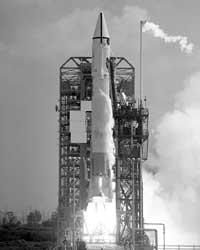
However, the honor of the first arrival of something sent by man to the red planet corresponds to the Soviet Union. Mars 3 probe: On May 28, 1971 he left the Earth and on December 2 of the same year reached Mars. As soon as landing on Mars began to send television images, but at 20 seconds the broadcast was interrupted. However, data on temperatures could be collected. The Mars 4, Mars 5, and Mars 6 probes were launched to Mars in 1973. They got to the orbit, but then they got lost.
Like these, the Viking 1 and Viking 2 probes aimed at Mars. They were sent by NASA in 1975 and arrived on the red planet in June and July of the following year. In addition to sending numerous images to Earth, they conducted studies on Martian soil and searched for microorganisms and water to check whether there was life or not. Two probes remained in orbit and two others stepped on the ground of Mars, one in the plain called Utopia and one in the west of Mars.
Rosetta awaitsOne of the most spectacular adventures ever imagined by man was the one that started in January: Rosetta project. Everything was ready, but the failure of pitcher Ariane a few months ago prevented the implementation of the project. The objective of the Therefore, ESA scientists prepared several comet landing systems so that the module would remain where it would land. In this way, the collision caused the automatic start-up of special screws for ice, to fix the useful on the ground. It also had two harpoons that appeared by order of the landing system, along with a gas bottle capable of generating sufficient momentum to keep the module glued to the ground. Once the module has been well anchored in the commas, research would begin. The objective was to obtain information about the birth of the Earth and the planetary system. Comets were formed with the Sun and planets. Unlike them, comets have not changed over time. Hence it is considered that information about the birth of our planetary system is available, information about 4.5 billion years ago. ESA scientists and engineers face major challenges in the Rosetta project. The problems of pitcher Ariane have caused the abandonment of the project but not forever. Deadlines are delayed and when they ensure that pitcher Ariane will have no problems they will throw again. However, project managers will have to change kite because it will no longer be possible to catch the Wirtanen kite. |
Published in D2 section of Deia.
Buletina
Bidali zure helbide elektronikoa eta jaso asteroko buletina zure sarrera-ontzian











